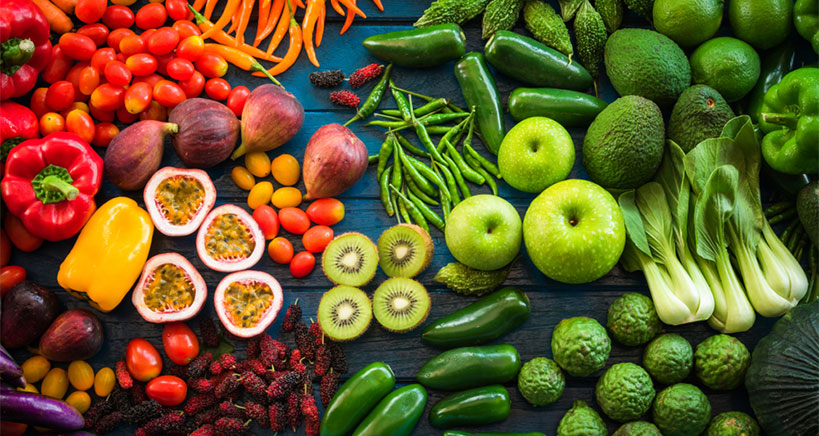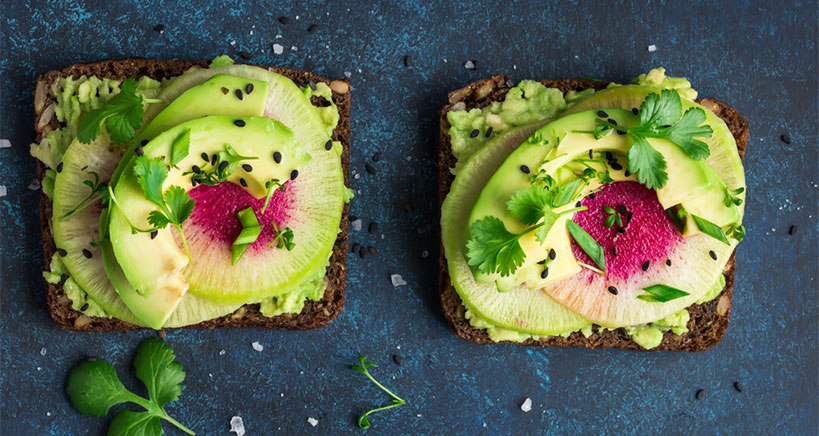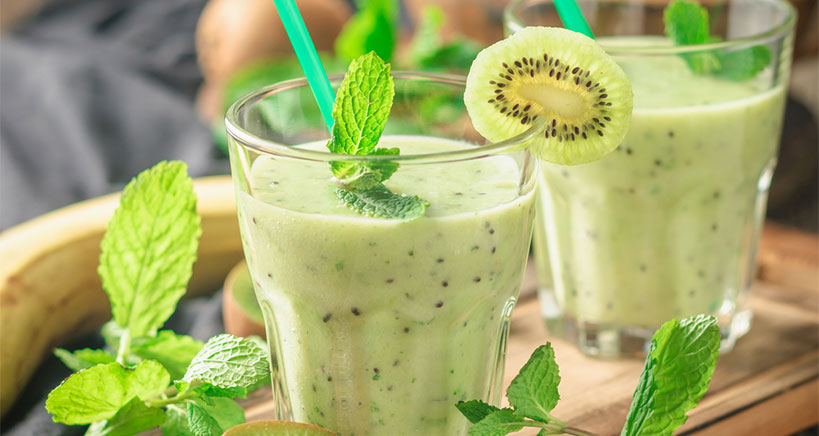
If you cook, bake, or cater professionally, this must-read is for you! In this factual yet fun-packed blog, you will discover what you didn’t know about some of the most common fruits and vegetables on the market. These are the same ingredients that you cook with daily, that you use to make decadent desserts, and that typically appear in your restaurants popular recipes and dishes.
Fruits and Vegetables Defined
Let’s begin our journey by learning what officially constitutes a ‘fruit’ and what properties define a ‘vegetable.’ At the same time, you will become privy to some surprising facts that will shake up some of what you thought you knew about the world of produce.
In a nutshell, foods that grow from a flower-based plant and that fit the criteria of having a fleshy and seedy inside are classified as fruits. On the other hand, vegetables come from plants that do not have seeds, and this applies to all edible parts of a plant, including its roots, stem, and leaves.
This makes potatoes, celery, carrots, and lettuce classic vegetables. However, many other types of produce popularly known as vegetables are really fruit! Case in point: Tomatoes, string beans, eggplants (think fleshy texture with seeds), pumpkins, squash, avocados, zucchini, and even cucumbers… by definition, these foods are technically fruit.
The Practical Side of Produce
Technicalities aside, let’s move onto the more practical side of produce and devour some useful nutritional information, tantalizing trivia, cooking and baking tips, and some great recipe ideas.
What You Didn’t Know about Oranges
By far one of the most popular fruits in the United States and around the globe, it is common knowledge that oranges are chock full of vitamin C, low in calories, and delicious as a breakfast food, snack, and when added to a wide range of cooking and baking recipes. In fact, a single orange supplies a full day’s worth of the recommended allowance of Vitamin C, which supports the immune system. But did you know that oranges are also a healthy source of fiber, thiamine, riboflavin, niacin, folate, potassium, magnesium and antioxidants? They have multiple health benefits, including supporting heart health and boosting skincare.
And here are some more little-known orange facts: According to the experts, oranges are really a hybrid of two other citrus fruits, consisting of 75% mandarin and 25% pomelo at the genome level. Moreover, there are many types of oranges that your restaurant can choose from, each one bearing unique culinary properties. The following are some of the most widely used oranges by type.
Types of Oranges
Navel Oranges: Descending from a single seedless orange tree on a Brazilian plantation and imported from Brazil in 1870, navel oranges are the leading fresh orange variety in the United States. They are seedless, large, have a thick skin that is easy to peel, and are especially cherished for their sweet, rich, and delectable juice.

Blood Oranges: As implied by their name, these citrus fruits feature a rich, ruby, almost blood-colored flesh beneath a thick peel. Originally produced via a mutation in Sicily in the 17th century, they are medium in size and seedless with a tart yet sweet flavor. Considered the most aromatic in the orange family, there are also different types of blood oranges, including moro, sanguinello, and tarocco. All are super juicy, and their vibrant color makes them a great choice for garnishing cakes and desserts.
Valencia Oranges: These almost-seedless orange varieties have a thinner rind and their juiciness and rich flavor make them a particularly popular pick among chefs.
Jaffa Oranges: Jaffa oranges, aka Shamouti, comprise 75% percent of Israel crops and are especially loved by Europeans. Easy to peel and segment, they are best known for their fragrant and pleasantly sweet flavor.
Mandarin Oranges: Smaller than regular varieties, mandarin oranges have a looser skin and are sweeter and less acidic in taste. Falling under the mandarin family tree umbrella are also clementines and tangerines, each with their own unique flavor profiles and characteristics.
Clementines: Loved by adults and children alike, small and seedless clementines are perfect as a light and messy-free snack. Add to fruit salads, veggie salads or use as a savory garnish for main courses and side dishes.
Tangerines: Soft-skinned and easy to peel, tangerines are a beloved snack that is especially high in vitamin C, making them highly effective in skincare and especially in preventing premature skin aging.
Cooking and Baking with Oranges
Looking for orange dessert recipes and ideas on how to add oranges to your eatery’s dishes? Here are some recommended ideas from the pros:
- Use oranges to make everything from sponge cakes, pound cakes, lemon cakes, chiffon cakes, chocolate cakes, carrot cakes, poppy seed muffins, and even chocolate chip cookies.
- Refreshing oranges and orange juice can be added to recipes for breakfast rolls, breads, sauces, tea and iced tea, chicken vegetable casserole, and more.
- Use orange slices as a topping on icings and cakes. Also, try your chef’s hand at making orange ice cream.
- Compliment oranges with crumbled cheese, pecans, walnuts, and a light citrus or balsamic vinaigrette dressing.
- Make your own OJ! You can ensure there are no sweeteners or preservatives added, and what tastes better than freshly squeezed orange juice on your breakfast, brunch, lunch or even dinner menus?
- Remember to take advantage of the highly edible orange peel, such as by making orange peel-infused olive oil or orange peel curry (made with spicy tamarind juice, served on hot steaming rice for a super savory side dish…) Likewise, grate orange peels to make flavor-packed orange zest to use in recipes.
- You can also make delicious, sweet, and tangy orange marmalade, a customer’s favorite, to spread on toast, fruit bread, scones, crackers, and freshly baked croissants.

Visit the Orange Museum
If there is one thing most people don’t know about oranges is that there is an entire museum dedicated to the citrus favorites! The Museu de la Taronja (taronja is Valencian for orange) is located in Valencia, Spain, where the Levante region produces nearly 70% of Spain’s exported oranges. If you are in the area, contact the Valencia Guias company for a guided tour of the orange-growing area, including orange picking, a visit to a citrus fruit factory, and a tour of the world’s sole citrus museum where you can learn all about the fruit’s history, cultivation, and modern-day production.
What You Didn’t Know about Radishes
Have you ever asked yourself: What can I do with radishes other than toss them in a salad or serve them with a dip? Little do most cooks know, but there are scores of ways to prepare and consume radishes, and they boast some impressive nutritional stats as well. Enjoy the following round up of info on this uniquely peppery-flavored veggie, including one member of the family: Daikon radishes.
Did you know that daikon radishes are high in vitamin C, high in calcium (which boosts bone health), good for the digestive system, and a natural pathogen eliminator which also boosts the respiratory system? Moreover, daikon oil promotes healthy skin, daikon juice also aids in digestion, and you can even consume daikon leaves, which are equally as nutritious.
No matter what type of radishes you are using, the good news is that there are many exciting ways to add them to recipes and treat your customers. Here are a few recommended recipe ideas:
- Cinnamon-and-Sugar-Coated Radish Chips
- Garlic Roasted Radishes
- Thinly sliced radishes atop Avocado Toast
- Protein-rich, filling White Bean Radish Salad
- Open-Faced Radish Toast with Crumbled Feta Cheese (simply add salt and pepper to taste, fresh greens, and some optional red chili flakes…)
- Red Potato Salad with Radishes (add chopped hard-boiled eggs and fresh chives)
- Radish Feta-Cheese Quiche
What You Didn’t Know about Kiwis
Originally called “Chinese Gooseberry,” the kiwi fruit originated in China and has been consumed for hundreds of years. Renamed by New Zealand on account of the fruit’s similarity to their native kiwi bird (a round body with fuzzy brown plumage), today over 60 kiwi species and hundreds of varieties are cultivated around the world. In fact, more than 1 million tons of kiwifruit are produced annually. Popular due to their appealing taste and multiple health benefits, kiwis grow on vines that can be as long as 33 feet (10 meters) and produce fruits for up to 30 years.

Nutritionally, kiwis contain twice the amount of vitamin C than oranges! They also boast the highest concentration of vitamins and fiber per gram compared to other fruits, are an excellent source of vitamins E and K, contain significant amounts of minerals (iron, manganese, and magnesium) and have antioxidant properties that help prevent disease. Moreover, a medium-sized kiwi has only 46 calories and can be easily incorporated into multiple dishes – from kiwi omelets to kiwi salsa, shortbread, smoothies, shortcakes, sorbet, parfait, and even kiwi jam…
And here is a kiwi fruit experiment that your customers can try: To fall asleep faster, sleep more soundly, and feel more rested upon awakening, eat two kiwis one hour before bedtime…
Know Your Ingredients
Every good cook should know his or her ingredients, and if you work in foodservice, your expanded know-how will make it that much easier to please the palates of your hungry customers and boost your ‘biz. Better yet, you can use the knowledge you have gained in this blog to educate your restaurant’s diners.
Here is some food for thought: Post compelling produce information on your business’s website and on popular social media sites. As you separate culinary facts from fiction and entice your guests with juicy tidbits about the foods they are eating, you will not only peak their curiosity and gain their attention, but you will hopefully tantalize their taste buds and invite their traffic. To seal the deal for the long run, simply serve them your signature dishes and to-die-for desserts. Then sit back and enjoy the sweet smell (and taste…) of success.
How to Market Your Food Facts
To spice things up even more, use fruit and vegetable little-known facts as part of your marketing campaign. For example, create an online trivia contest that visitors can enter for free; for the grand prize, offer of a free meal at your establishment, a discount on featured menu items, or customer loyalty points. Be as creative as your chef and professional baker’s imaginations allow… And don’t forget to post share-worthy pictures of your produce masterpieces online where a single photo can go viral in mere moments, attracting a global audience and reaping rich rewards far into the future.
Summing Up
If you enjoyed Part I of our series on common fruits and vegetables, here is a tasty teaser for some of the fun facts we will be sharing in the upcoming Part II.
Little do most people know that:
- Raw potatoes can be used to treat ailments, heal broken bones, ease frostbite, help clear skin blemishes, treat burns and tell time
- The science of apple growing is called pomology
- The most expensive fruit in the world is the Japanese Yubari melon, fetching a pretty price tag of almost $12,000!